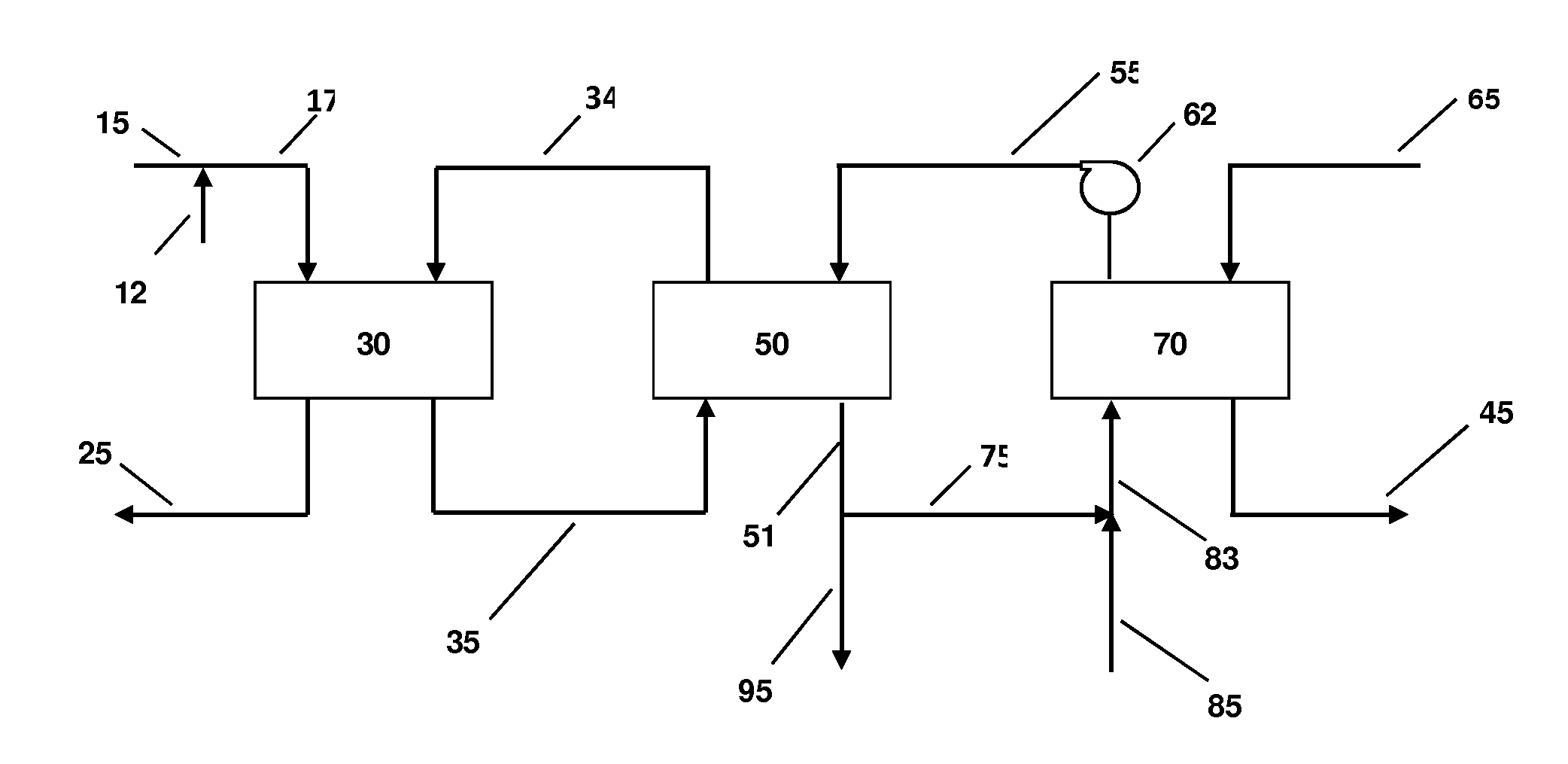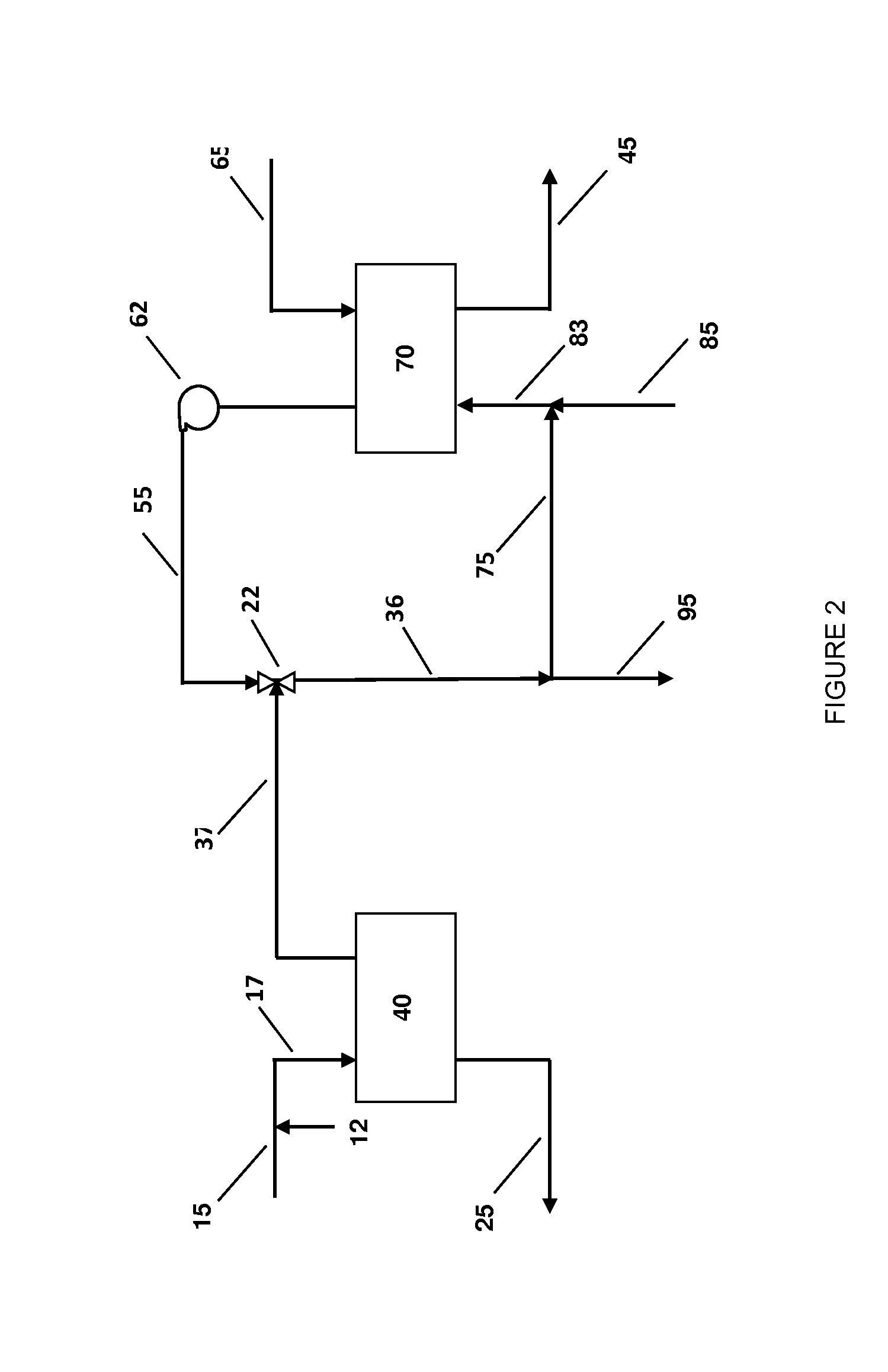Ammonium recovery methods
a technology of ammonium cation and recovery methods, which is applied in the direction of biological water/sewage treatment, separation processes, waste based fuel, etc., can solve the problems of increasing design requirements, adding additional unit operation, and increasing capital and operating costs, so as to increase the amount of ammonia and energy density
- Summary
- Abstract
- Description
- Claims
- Application Information
AI Technical Summary
Benefits of technology
Problems solved by technology
Method used
Image
Examples
Embodiment Construction
[0038]For purposes herein, the following terms have the meanings set forth.
[0039]Ammonium means ammonium ion.
[0040]Anabolic bioconversion of a substrate means the metabolic conversion by a microorganism of carbon-containing substrate, including, but not limited to carbon monoxide, carbon dioxide and hydrogen, hydrocarbons, carbohydrates and other oxygenated hydrocarbons, under aerobic or anaerobic fermentation conditions to oxygenated organic compound.
[0041]Oxygenated organic compound means one or more organic compounds containing two to six carbon atoms selected from the group of aliphatic carboxylic acids and salts, alkanols and alkoxide salts, and aldehydes. Often oxygenated organic compound is a mixture of organic compounds produced by the microorganisms contained in a fermentation broth.
[0042]Syngas is a gas containing carbon monoxide and frequently hydrogen, although term “syngas”, for purposes herein, is also intended to encompass carbon monoxide gas streams that may have lit...
PUM
| Property | Measurement | Unit |
|---|---|---|
| mole fraction | aaaaa | aaaaa |
| volume percent | aaaaa | aaaaa |
| pressures | aaaaa | aaaaa |
Abstract
Description
Claims
Application Information
 Login to View More
Login to View More - R&D
- Intellectual Property
- Life Sciences
- Materials
- Tech Scout
- Unparalleled Data Quality
- Higher Quality Content
- 60% Fewer Hallucinations
Browse by: Latest US Patents, China's latest patents, Technical Efficacy Thesaurus, Application Domain, Technology Topic, Popular Technical Reports.
© 2025 PatSnap. All rights reserved.Legal|Privacy policy|Modern Slavery Act Transparency Statement|Sitemap|About US| Contact US: help@patsnap.com



